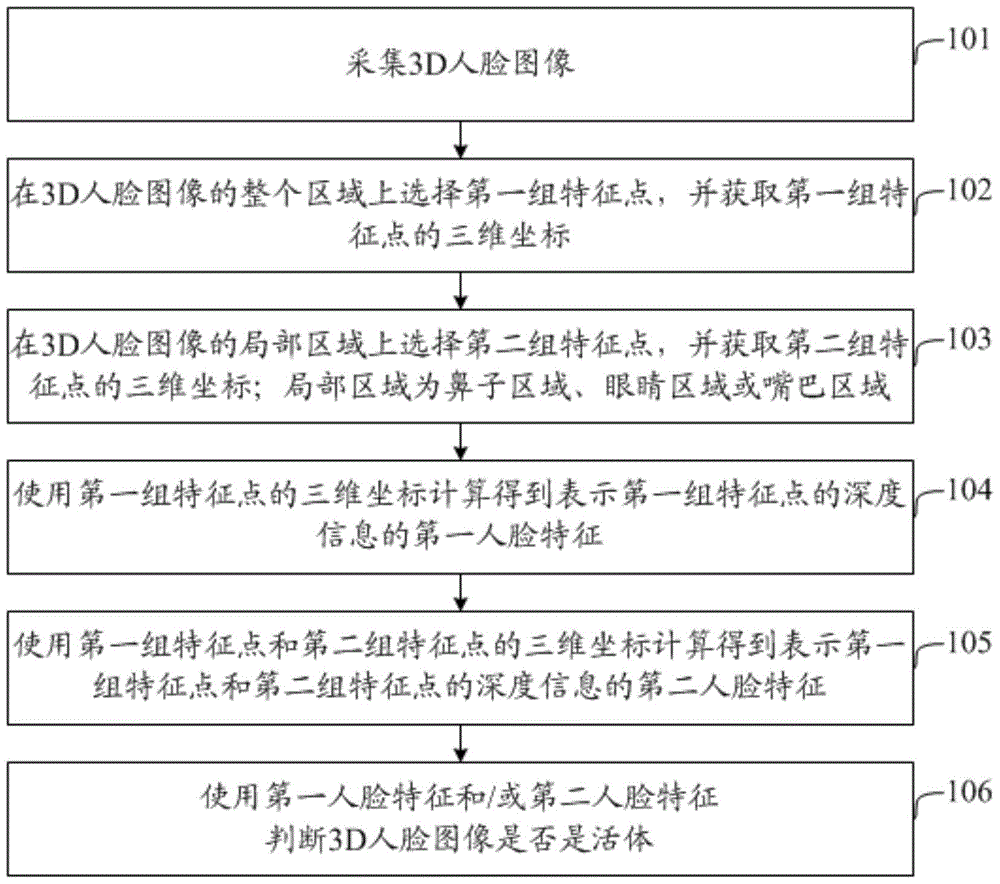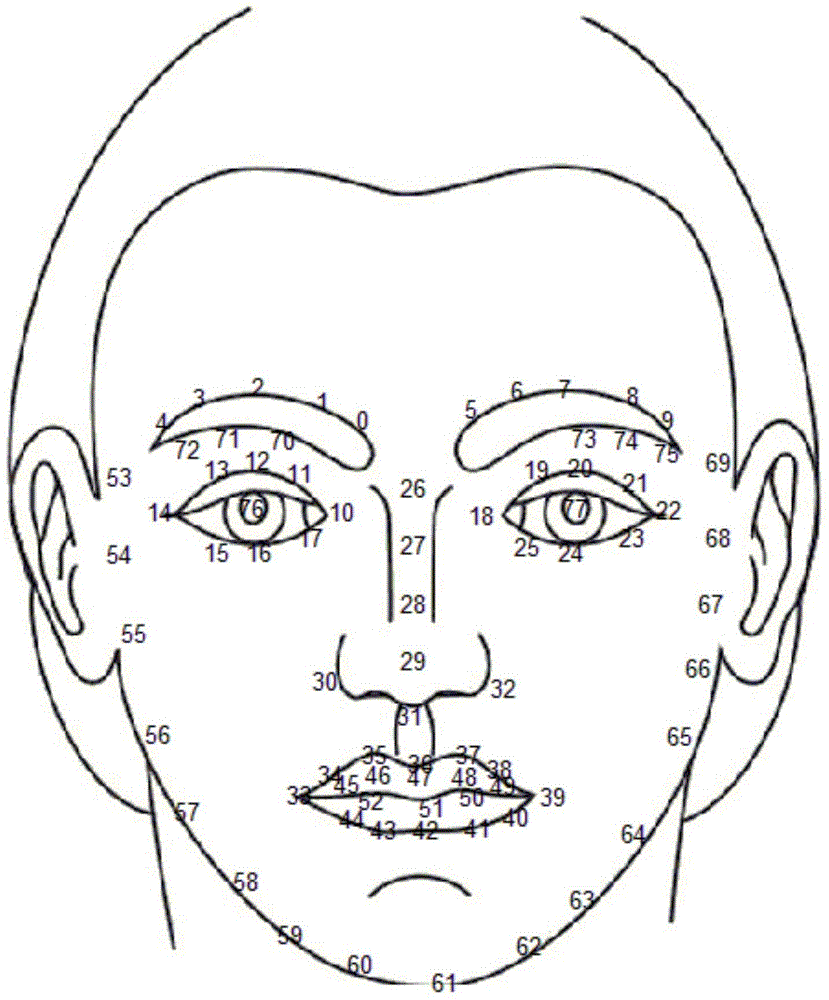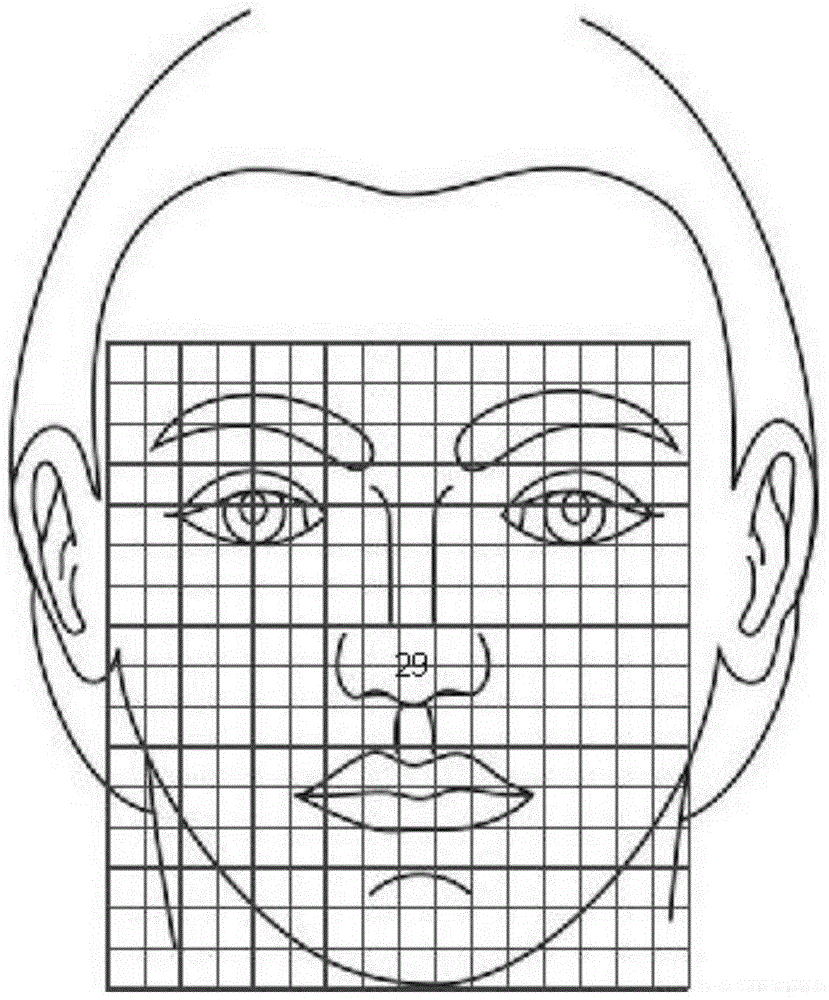Method and device for human face in-vivo detection
A living body detection and living body technology, applied in the field of face recognition, can solve the problems of low recognition accuracy, unfriendly users, deceiving face recognition equipment, etc., and achieve the effect of high accuracy, robustness and stability
- Summary
- Abstract
- Description
- Claims
- Application Information
AI Technical Summary
Problems solved by technology
Method used
Image
Examples
Embodiment Construction
[0031] In order to make the technical problems, technical solutions and advantages to be solved by the present invention clearer, the following will describe in detail with reference to the drawings and specific embodiments.
[0032] On the one hand, the embodiment of the present invention provides a method for human face liveness detection, such as figure 1 shown, including:
[0033] Step 101: Collect a 3D face image. In this step, preferably a 3D camera is used to acquire a 3D face image.
[0034] Step 102: Select the first group of feature points on the entire area of the 3D face image, and obtain the three-dimensional coordinates of the first group of feature points.
[0035] Ordinary 2D face images can only obtain two-dimensional coordinates of feature points, while 3D face images can obtain three-dimensional coordinates of feature points. For example, some 3D cameras can directly provide three-dimensional coordinates of some points on a 3D face image, while others T...
PUM
 Login to View More
Login to View More Abstract
Description
Claims
Application Information
 Login to View More
Login to View More - R&D
- Intellectual Property
- Life Sciences
- Materials
- Tech Scout
- Unparalleled Data Quality
- Higher Quality Content
- 60% Fewer Hallucinations
Browse by: Latest US Patents, China's latest patents, Technical Efficacy Thesaurus, Application Domain, Technology Topic, Popular Technical Reports.
© 2025 PatSnap. All rights reserved.Legal|Privacy policy|Modern Slavery Act Transparency Statement|Sitemap|About US| Contact US: help@patsnap.com



